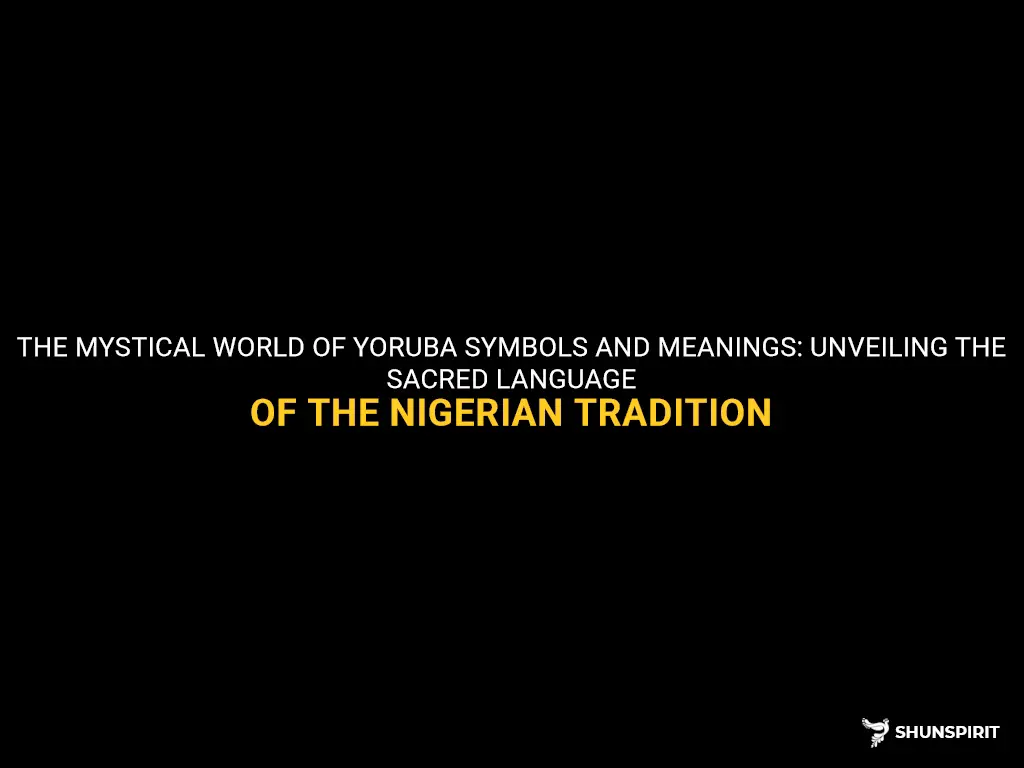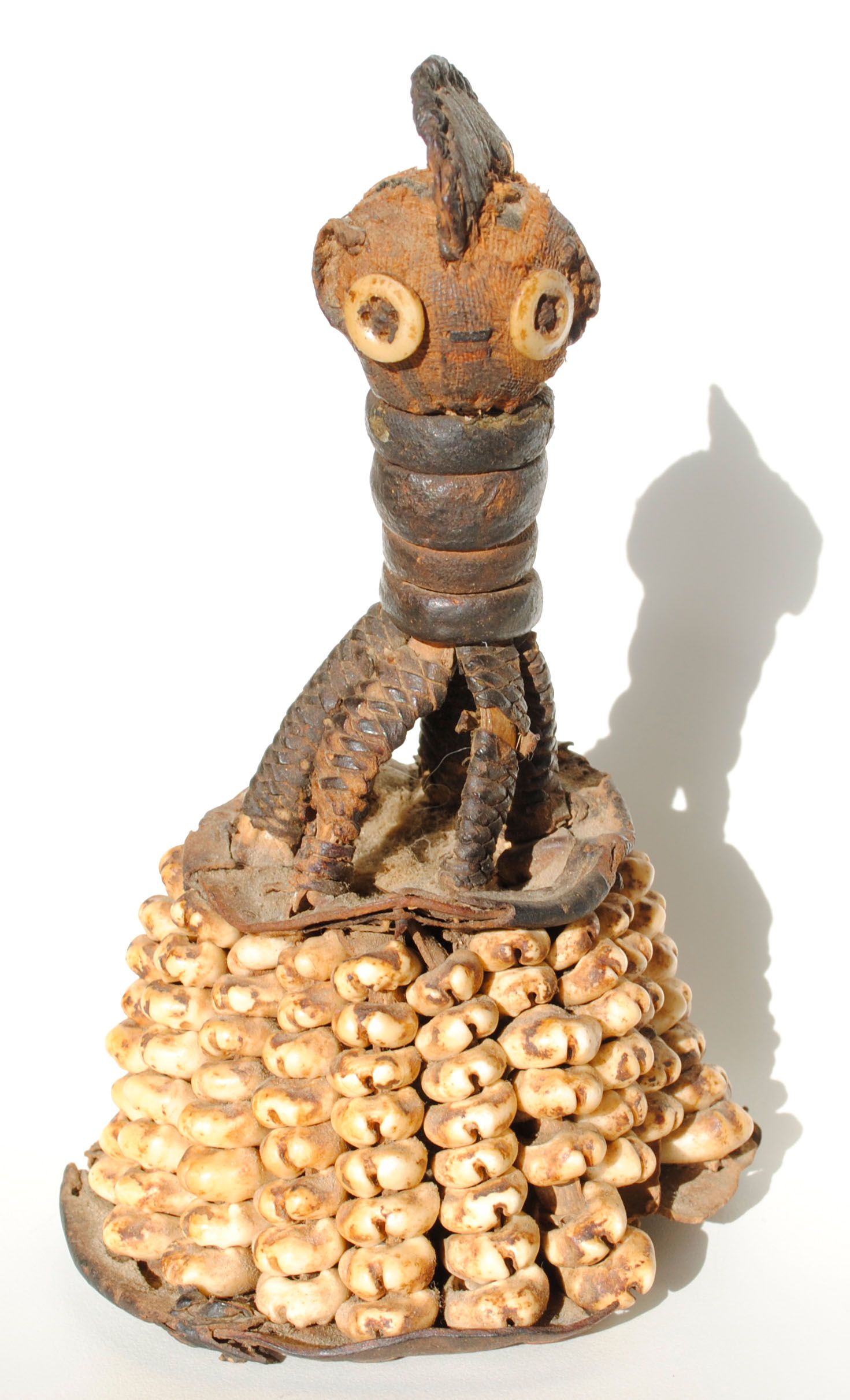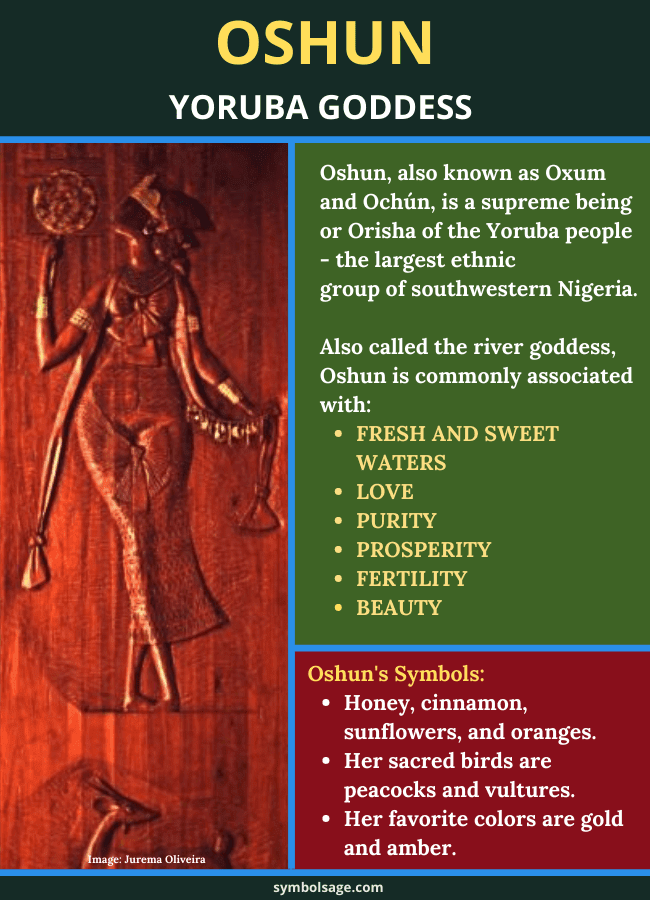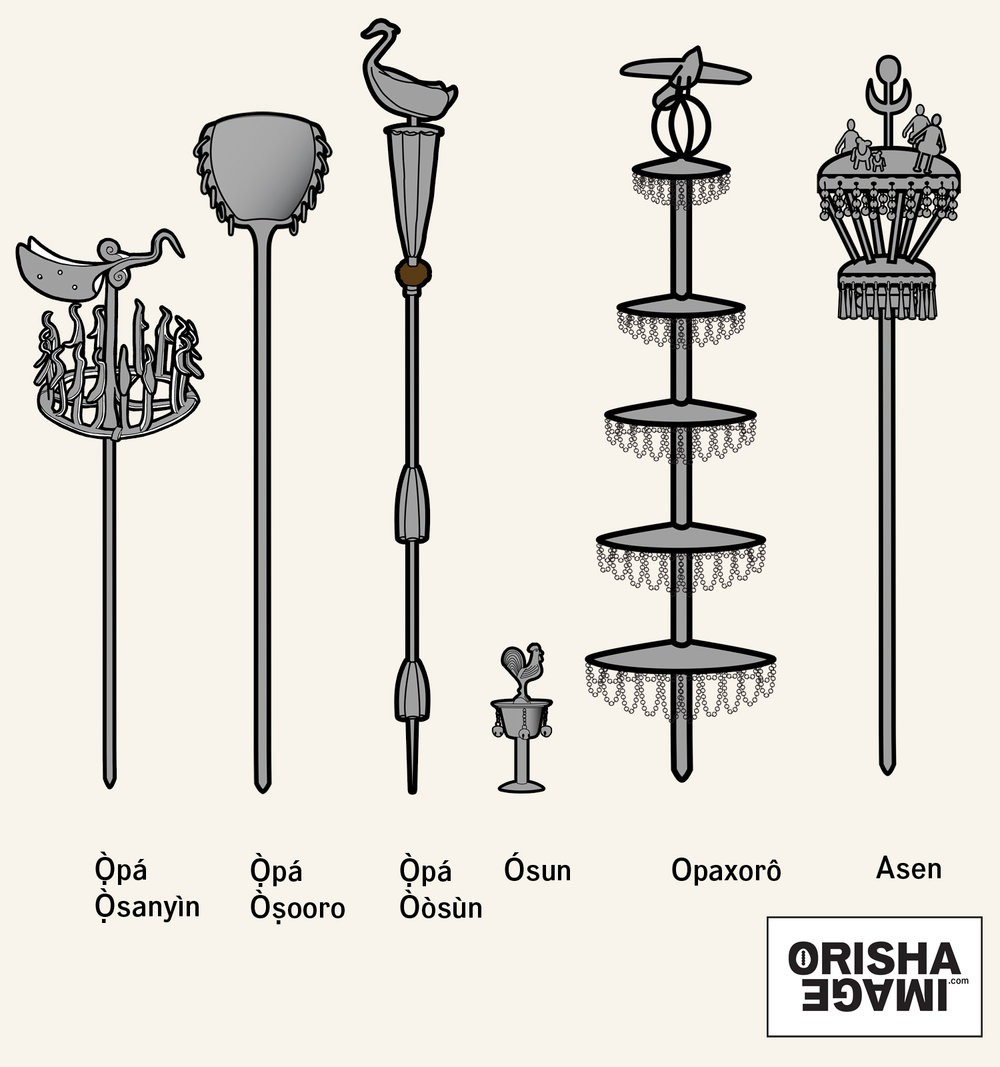
Descarga gratis Yoruba moderno una introducción concisa a la lengua
makes a circle of ashes (Yoruba: eeru) or white chalk (Yoruba: efun); within the circle, which is a symbol of eternity, he pours a libation of cold water, and in the centre he places his kolanut (Yoruba: obi on cotton wool-Yoruba: owu etUtu). He then takes the kolanut, splits it and holding the valves within the circle. Often, a.

The Mystical World Of Yoruba Symbols And Meanings Unveiling The Sacred
Oshun, also known as Oxum and Ochún, is a supreme being or Orisha of the Yoruba people - the largest ethnic group of southwestern Nigeria. In the Yoruba religion, she's also called the river goddess and is commonly associated with fresh and sweet waters, love, purity, prosperity, fertility, and beauty. She's the most prominent and.

Yoruba Ibori (Symbol of the Inner Head), Nigeria
Oya was an Orisha in Yoruba religion, meaning that she was a spirit sent by one of the three manifestations of the Supreme God, known as Olodumare. She was known by several names in Yoruban mythology including:. Depictions and Symbols of Oya. There are several symbols associated with the goddess Oya, including the sword or the machete, the.

Yoruba symbols and meanings
Ogun - the god of iron, is fond of snails, tortoises, dogs, and rams. Esu - the trickster Yoruba deity, accepts black fowls. Sango - the god of thunder, accepts rams. Osanyin - the god of herbal medicine, is fond of tortoises. Animal sacrifices are also used when a hunter dies.

Redirect Notice African symbols, Adinkra symbols, Adinkra
In the Yoruba religion, Obatala is a primordial deity, strongly associated with the notions of spiritual purity, wisdom, and ethics. According to myth, he was one of the 16 or 17 first divine spirits that Oludumare sent down to the Earth from the sky, to prepare the world for humans. Divinities from the Yoruba pantheon were usually married to.

Yoruba People, Pattern Meaning, African Textiles, African Patterns
The tribal marks are part of the Yoruba culture and are usually inscribed on the body by burning or cutting of the skin during childhood. [1] The primary function of the tribal marks is for identification of a person's tribe, family or patrilineal heritage. [2] [3] Other secondary functions of the marks are symbols of beauty, Yoruba creativity.

Yoruba flag redesign proposal by zmijugaloma on DeviantArt
Significance of Traditional Yoruba Colours and Values Colours have rich meanings in Yoruba culture as well as all the symbols and motifs. These colours replicate a variety of meanings in their spoken, visual language and religion. For Fadipe (1970), the traditional Yoruba colour spectrum consists of the three primary

yoruba symbols Google Search Esoteric Symbols, Ancient Symbols
Elegua, usually referred to as the 'trickster', is the god of beginnings and endings. He is also associated with the means of communication, as he is the messenger of Olodumare, the supreme Yoruba god. Oggun is the good of metals, of war, work, and sciences. Ochosi is the god of hunting, justice, skill, and intelligence.

Multi Mythical and symbols of the tribe YORUBA Etsy in 2020 African
The Yoruba are situated in southwest Nigeria in what is often referred to as Yoruba land. The Yoruba name is a more recent name that came from the Yorubaʼs neighbors, the Hausa. Yoruba in Hausa, literally meant "the people of the kingdom of Oyo," and later was used by missionaries in the 1800s.

Oshun The Yoruba Goddess of Love, Fertility and Water Symbol Sage
Yoruba symbols and meanings are used to express beliefs, values, and concepts that are central to the Yoruba way of life. Yoruba mythology is a complex system of beliefs that revolves around a pantheon of deities known as Orishas.

The agitations for Oduduwa Republic by the Yoruba Liberation Command is
Oba Lamidi Adeyemi III, the ALAAFIN of OYO. 5. The Benin tribe called the marks "iwu" while the Hausa tribal marks were known as "zube", "yan baka", "doddori" and "bille". The tribal mark well known for the Fulani tribe is the "kalangu". 6. Other Yoruba tribal marks includes; Ture, Mande, Bamu and Jamgbadi, Soju, Jaju.

African Symbols And Meanings Pdf calorie
symbols embody non-verbal communicative and aesthetic values, as well as the way of life of the people who designed them. The symbols are usually printed on cotton fabric to produce "Adinkra cloths," which. The Yoruba equivalents are Olokun and Yemoja. Aizan Velekhete (Ayizan Avlekete) represents the "female principle." She sits in the.

Pin em Artesanato
Yemaya married her brother, Aganyu and they had a son together, whom they named Orungan. Yemaya was known by many names including Yemalla, Yemoja, Yemaja, Yemalia and Iemanja. Her name, when translated means 'the Mother Whose Children are Fish' and this could have two meanings. She had innumerable children.

Yorùbá Iron Walking Sticks — Orisha Image
The Oyo Empire was the most powerful of the political groups in Yorubaland, the geographical homeland of the Yoruba people living in present-day Togo, Benin, and Western Nigeria. The empire existed during the same time as the medieval period in Europe and beyond, and it continued into the 19th century. Shango was the fourth Alaafin, or king, of the Oyo Empire, Alaafin being a Yoruba word.

Tenture Murale Meaning English
Here are some of the most popular Yoruba symbols: Adinkra - This is one of the most important symbols in Yoruba culture. It represents the unity of the people of the Yoruba tribe. It is often.

. Adrinka Symbols, Symbols And Meanings, Ancient Symbols, Fashion
The Iroko tree, scientifically known as Chlorophora excelsa, is a magnificent and towering tree that belongs to the family Moraceae. It is renowned for its impressive size, with heights reaching up to 50 meters and a circumference of about 10 meters. The tree possesses a straight, cylindrical trunk that supports a large, spreading crown.